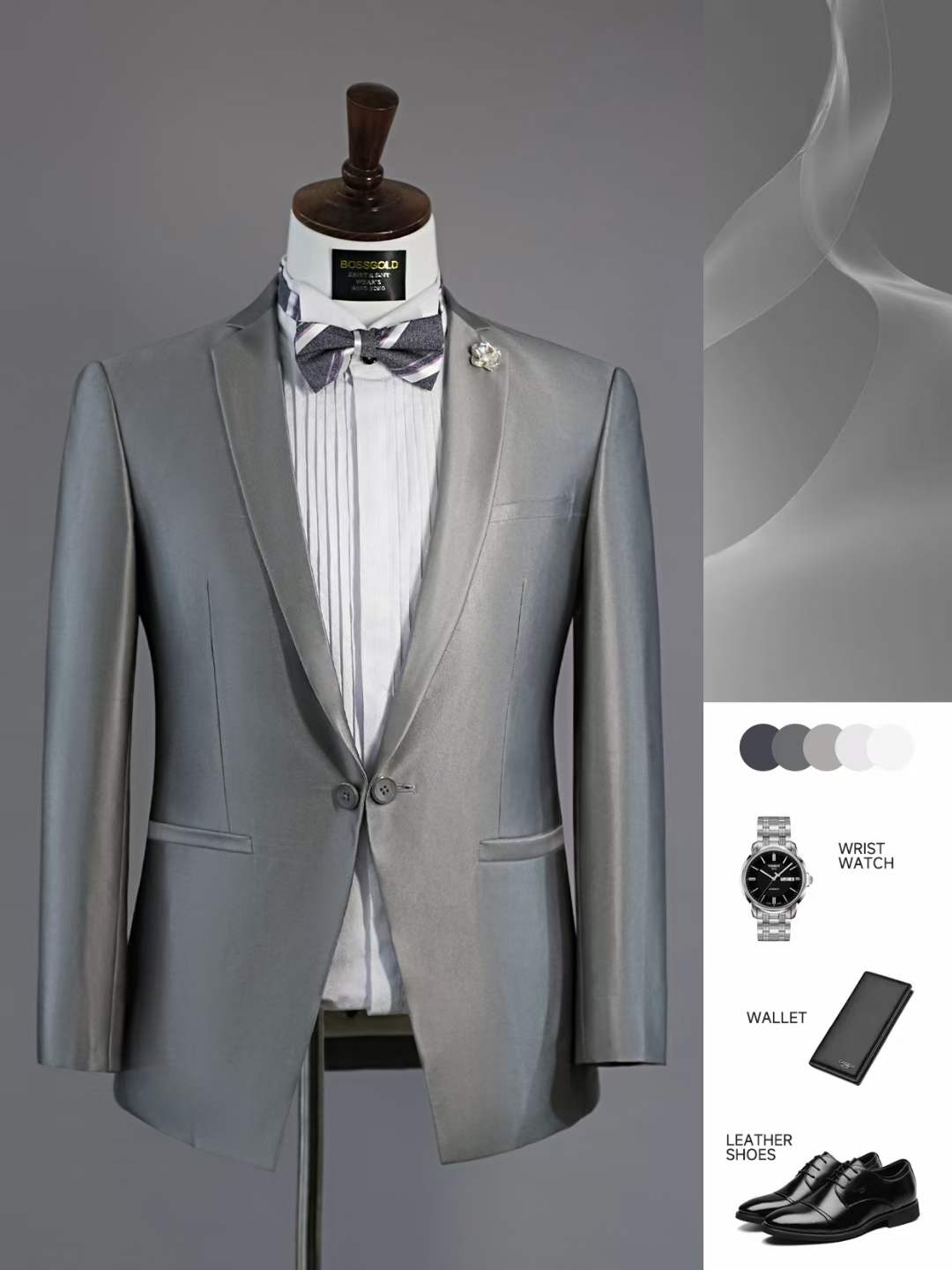**From Royal Courts to Modern Metropolises: The Tale of the Suit**
The suit, a symbol of professionalism, elegance, and sometimes power, has a rich history that spans centuries. Its evolution is a testament to the ever-changing dynamics of fashion, culture, and societal norms.
**The Beginnings in Europe**
The origins of the suit can be traced back to the royal courts of Europe in the late 17th century. Kings and noblemen wore elaborate outfits, often adorned with jewels and intricate embroidery. These early versions of the suit, though far from the streamlined designs we see today, set the stage for a more structured and uniform style of dressing.
**The 19th Century: Birth of the Modern Suit**
The 1800s saw a significant shift. The Industrial Revolution brought about a need for more practical and standardized clothing. The morning coat, a precursor to the modern-day suit jacket, became popular. By the end of the century, the lounge suit, which closely resembles today's business suit, had emerged and was being worn by men across different social classes.
**The 20th Century: Wars, Rebellion, and Innovation**
World Wars in the 20th century had a profound impact on fashion. With resources limited, suits became simpler and more functional. Post-war periods, however, saw a resurgence of style and flair. The 1950s and 60s, for instance, introduced slimmer fits and bolder patterns.
The latter part of the century was marked by rebellion against established norms. Younger generations began to challenge the traditional suit, opting for more casual and diverse styles. This era also saw the rise of designer brands, each bringing a unique twist to the classic suit.
**The 21st Century: A Blend of Tradition and Modernity**
Today, the suit is more versatile than ever. While it retains its status as formal wear, there's also a growing acceptance of more casual, deconstructed styles. Innovations in fabric have made suits more comfortable and adaptable to different climates. Moreover, with the rise of gender-neutral fashion, suits are no longer just for men. Women, too, have embraced the suit, tailoring it to fit their unique style and body shape.
**The Roaring Twenties and the Dapper Look**
The 1920s, often referred to as the "Roaring Twenties," brought about a significant change in men's fashion. The jazz age, with its lively music and dance, demanded a more flexible and comfortable suit. Trousers became wider, and jackets were often worn loose. The double-breasted suit, with its iconic wide lapels, became a staple for the stylish man.
**The Conservative 1930s and 1940s**
The economic downturn of the 1930s and the subsequent war in the 1940s saw a return to a more conservative style. Suits became more muted in color, and the flashy patterns of the 1920s were replaced by solid colors and subtle stripes. The war also introduced the utility suit, made with fewer materials due to rationing, and devoid of any unnecessary embellishments.
**The Post-War Era and the Advent of Casual**
The post-war era, especially the 1950s, was marked by prosperity and a return to luxury. Suits became more form-fitting, with narrower trousers and slimmer lapels. However, the late 1960s and 70s saw a shift towards casual wear. The hippie movement, with its emphasis on freedom and individuality, saw a decline in the traditional suit's popularity. Instead, colorful shirts, bell-bottoms, and more relaxed clothing became the norm.
**The Power Suits of the 1980s**
The 1980s saw the return of the suit as a symbol of power and success. The "power suit," characterized by its broad shoulders and sharp lines, became synonymous with corporate success. Popularized by TV shows and movies, the power suit became a must-have for the ambitious professional.
**The New Millennium and the Age of Experimentation**
The turn of the century saw a blend of traditional and modern. While the classic suit remained a staple, designers began to experiment with colors, patterns, and materials. The 2000s also saw the rise of tech billionaires, who often shunned the traditional suit for turtlenecks and jeans, challenging the established norms of professional attire.
**The Modern Suit: A Blend of Past and Present**
Today's suit is a culmination of centuries of evolution. While it pays homage to its rich history, it also embraces modern trends and innovations. From sustainable materials to tech-integrated suits, the modern suit is a blend of tradition and innovation.
**Conclusion**
The suit, while seemingly simple, carries with it a rich tapestry of history and culture. Its evolution is not just a testament to changing fashion trends but also reflects the socio-economic and political shifts of each era. As we look to the future, one thing is certain: the suit, in whatever form, will continue to be an integral part of our wardrobe, adapting and evolving as it has for centuries.

